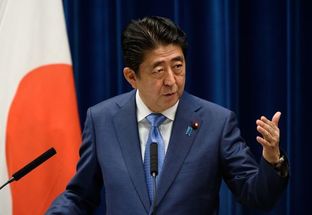 Source: www.bloomberg.co.jp
Source: www.bloomberg.co.jp Abe can also count on recent economic data showing that Japan has expanded its economy for six consecutive quarters, and unemployment is at 2.8%, the lowest among the G-7 nations. Yet this only shows one side of the coin. While unemployment may be low, a majority of employment generated in the past four years has been in either contract or semi-permanent work, both of which don’t provide the social security benefits that come with full-time work and which have not attracted any wage rises. While Abe has championed female participation in work, the rate at which the private sector has embraced the idea of more women in the workforce has been slow, if not stagnated altogether.
Furthermore the investment that has been injected into the Japanese economy ahead of the 2020 OIympics will come to an end in or around 2019, and then Japan will need to find a new area of fiscal stimulus. As part of his electoral platform, Abe has said that he would use tax revenue to finance social programs aimed at greater access to child care and free higher education, both of which have drawn the ire of the business sector which fears yet further blowouts in the national debt. It is also unclear how the LDP’s allies in the House, the Komeito, will react to suggestions to increase debt.
Meanwhile Abe has also used his recent visits to India and the US to demonstrate that he will provide the surety that the nation needs while it faces threats from North Korea’s expanded nuclear missile program and the growing power of China in the region. The fact that the election is taking place at such a volatile time has drawn its critics, yet national security is a field that Abe believes is a strong point of his government and one that he will press during his electoral campaign. It is less clear whether the LDP will do any campaigning on the issue of constitutional revision – it’s not an issue at the forefront of public concern, and doubts still remain about whether any such revision will actually succeed in passing through the Diet.
Those doubts will certainly have been magnified by the appearance of Tokyo Governor Yuriko Koike and her newly formed “Party of Hope”. According to an FNN report, the Party of Hope is looking to put 150 candidates in seats around the nation in order to try to secure a foothold in the Lower House and build up a more viable opposition to the ruling LDP. It certainly may be successful in this task, given that around 40% of voters are as yet undecided and may indeed be searching for an alternative to yet another LDP incumbency. But it really depends on just how much appeal both Koike and the Party of Hope have outside of Tokyo. As the manifesto they put out on Wednesday shows, they are a party of ideals, but not so concerned about details. Given that much of the country relies on federal assistance for economic stimulus packages (the Tohoku more so than any other region), anything that promises much but has no concrete plans to deliver will not resonate much with rural voters.
So is Abe taking a risk by calling the election in October? That depends on the definition of risk. If the aim is to return the LDP to power, then there’s every chance that will happen. Despite recent financial scandals the public desire for a change in government is very low, and given that no real alternative opposition party exists, voters will go with the status quo for the time being. Abe may lose some seats in Lower House, which would be a reflection on his leadership and buoy his rivals, not to mention bringing the entire question of constitutional revision to a halt. If, however, the Party of Hope receives a surge of support both inside and outside of Tokyo, then the LDP will have a real problem on its hands. It may create a nascent opposition that could grow to absorb many of the other minor opposition parties, setting itself up as the true rival to the LDP instead of the DP. That is the real risk to Abe’s rule, but in the current climate it is a scenario that is not likely to play out.
 RSS Feed
RSS Feed